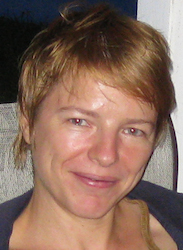
Bio

Living cells are surrounded by lipid membranes, which are fundamental to their integrity. Similarly, all organelles of the eukaryotic cells, such as nucleus, mitochondria, endoplasmic reticulum and Golgi are membrane structures. Membrane integrity is essential for compartmentalized life preventing an uncontrolled diffusion of proteins, metabolites, signaling molecules and ions. However, cells need to maintain well-organized fluxes of these molecules: nutrients need to enter cells, catabolites and toxic compounds need to be expelled, and signaling molecules need to be secreted and taken up from the extracellular space. The lipid bilayers of membranes represent formidable barriers for polar molecules and cells have evolved an array of specialized proteins, transporters and channels, to assist their controlled trans-membrane passage. We are interested in understanding the structure and mechanism of these proteins, focusing primarily on transporters. These are miniature molecular machines that undergo critical conformational transition. Our key goal is to understand these transitions in terms of structure, dynamics and thermodynamics. As our main techniques, we use X-ray crystallography, calorimetry and a variety of spectroscopic approaches.
Our main focus over the last few years has been on glutamate transporters, although we study other proteins as well. In the central nervous system, glutamate transporters are responsible for the uptake of the neurotransmitter glutamate following rounds synaptic signaling. Rapid clearance of the transmitter is essential not only to allow for repeated rounds of neurotransmission but also to prevent excessive stimulation of the glutamate receptors, which leads to cytotoxicity and neuronal death. Dysfunction of these transporters is implicated in numerous disorders such as neurodegenerative diseases, stroke, traumatic brain injury, epilepsy and schizophrenia. Located in the plasma membranes of glial cells and neurons, the transporters couple uptake of glutamate to movements of sodium and potassium ions down their respective electro-chemical gradients. Remarkably, they are able to concentrate glutamate inside the cells by a million fold. Over the years, we have been using X-ray crystallography to map out the structural transitions that underlie transport in a bacterial homologue of glutamate transporters (GltPh). We also use a variety of other approaches to investigate how the transporter harvests the energy of the ionic gradients and the timing of the mechanical motions in these nano-machines. We are also interested in their evolution and in means of manipulating their specificity, stability and reaction rates.
